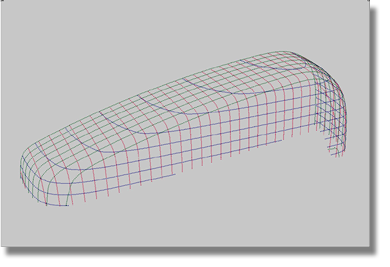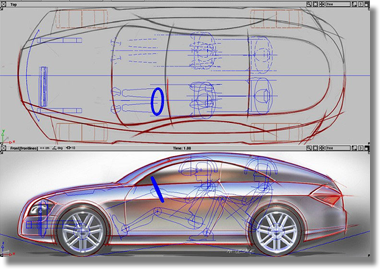Surfaces can be modeled from several input types. One of the more common methods of surfacing is to base the model on the input derived from a scanned model. Some model scanning techniques can produce point clouds while other scanning techniques produce curves instead of points. Depending on the technique employed during the scanning procedure, the data can be either be sorted or unsorted.

For the purposes of surface modeling it is better to have sorted data. If your scanning technique produced an unsorted point cloud instead of sorted section data similar to the image above, additional work is required to triangulate the points and cut the facets.
Another type of input is derived from a completed surface model that has yet to be modified. In these cases, surface data and hard points can be fitted with a new, updated model.

In other cases, input may consist of a collection of sketches and a package similar to the image below.

Regardless of the type of input data, surface modeling is largely an interpretation of a variety of inputs. For the modeler it is imperative to achieve an understanding of the design and the character of the model. With any surfaced model there are a number of intricate details that lay hidden below the surface, known only to the designer and modeler. Due to the precision of modeling software, the modeler must develop a close working relationship with the designer in order to surface the model. After all, surface modeling is a creative process that finishes a design.